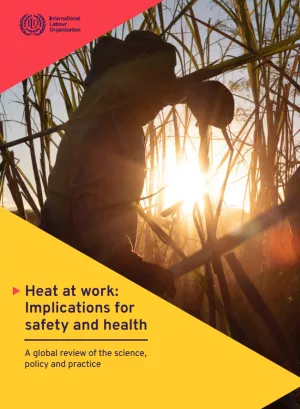
Heat stress is having serious impacts on the safety and health of workers, as they are exposed to higher daily temperatures as well as more frequent and severe heatwaves. This report includes an analysis of national legislation to address heat stress from 21 countries across the world, identifying common provisions for workplace level measures.
Heat stress can immediately impact workers on the job, leading to illnesses such as heat exhaustion, heatstroke, and even death. In the longer term, workers can develop serious and debilitating chronic diseases, impacting the cardiovascular and respiratory systems, as well as the kidneys.
The number of workers suffering the consequences of excessive heat is alarming and occupational safety and health protections have struggled to keep up.
While provisions in national legislation exist to protect workers from excessive heat, in most cases these are general in nature and do not adequately address the intensifying climate change-related dangers many workers face daily. Some countries are now revising their laws or developing new specific regulations to address heat at work. This report includes an analysis of national legislation to address heat stress from 21 countries across the world, identifying common provisions for workplace level measures.